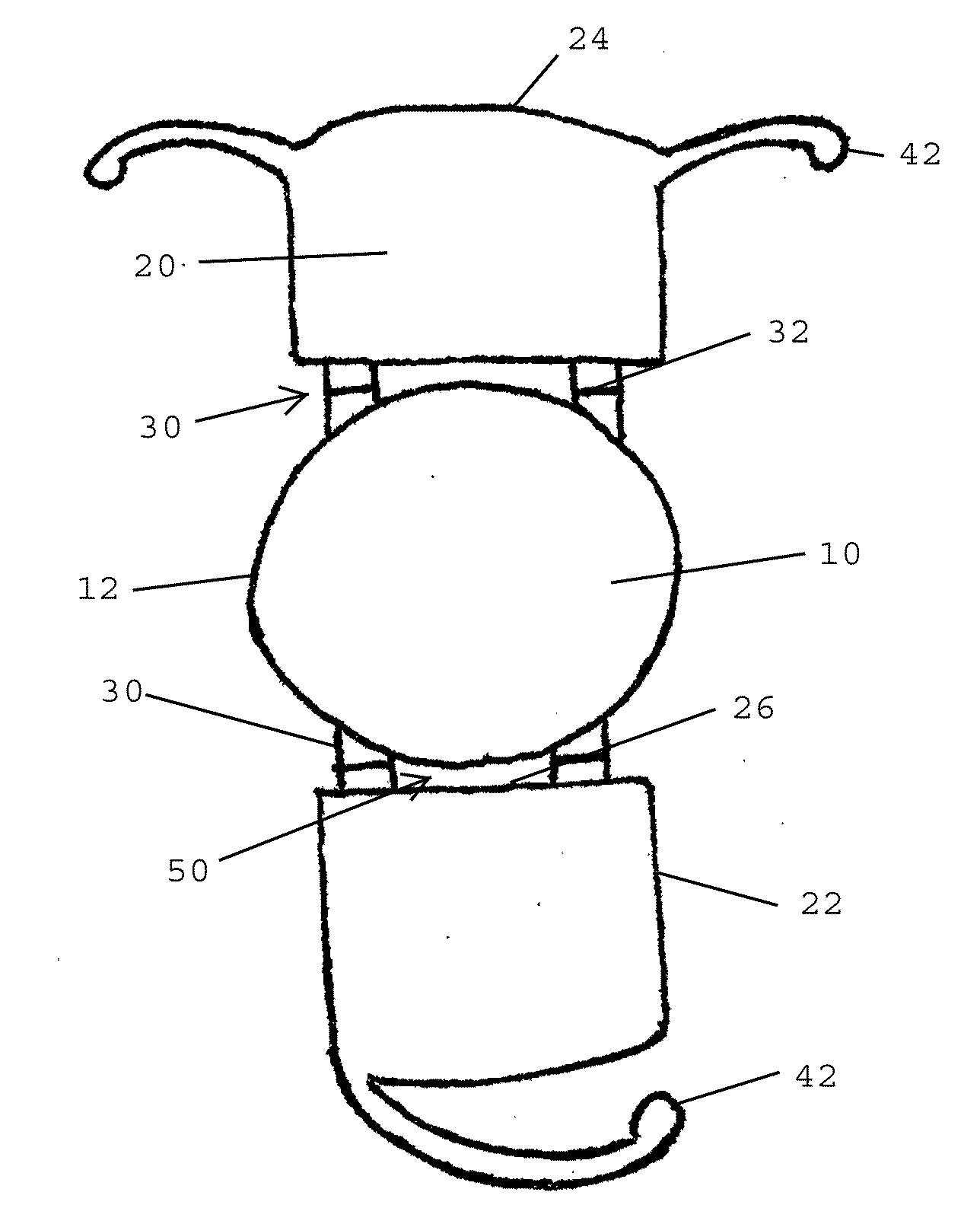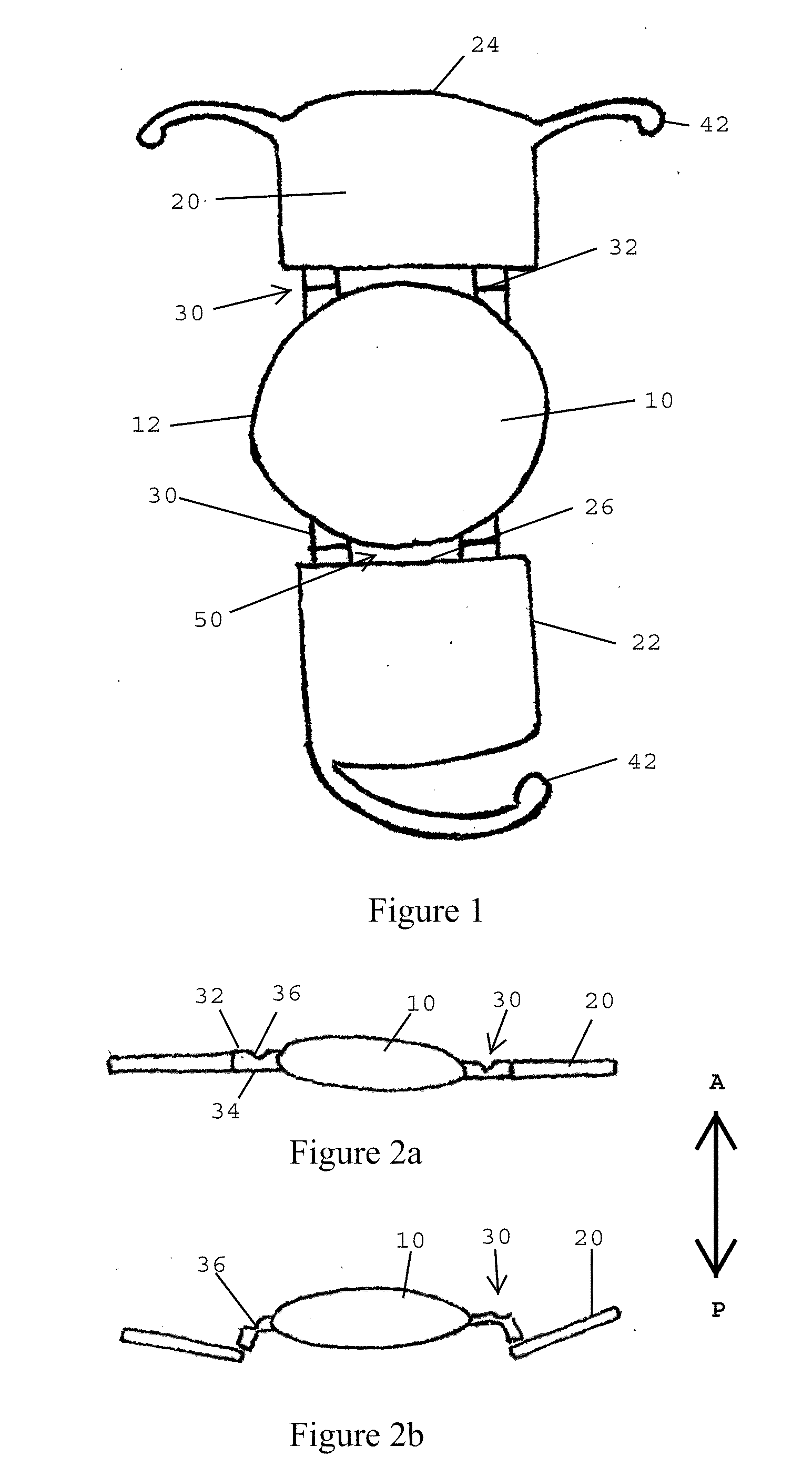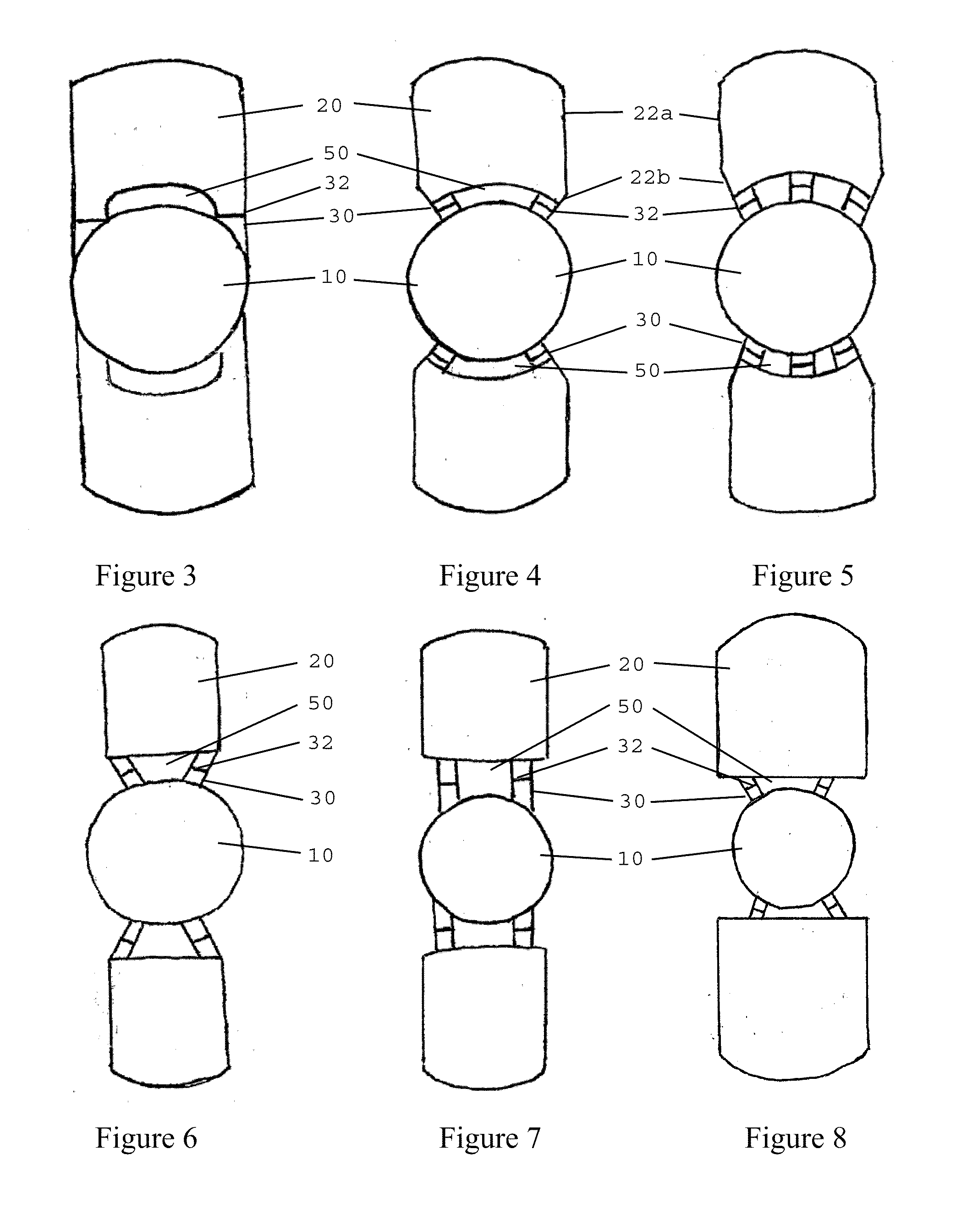Tilt Stabilizing Accommodating Intraocular Lens
a technology of tilt stabilization and intraocular lens, which is applied in the field of tilt stabilization accommodating intraocular lens, can solve the problems of destabilizing the lens optic, unable to allow adequate movement of the optics, and complication can occur, so as to improve near vision, improve stability, and reduce resistance to pressure changes
- Summary
- Abstract
- Description
- Claims
- Application Information
AI Technical Summary
Benefits of technology
Problems solved by technology
Method used
Image
Examples
Embodiment Construction
[0012]An accommodating intraocular lens design according to an embodiment of the present invention is described that overcomes the deficiencies of present designs noted above.
[0013]An accommodating intraocular lens (AIOL) is provided whereby an optic is coupled to opposing plate haptics by a plurality of spaced apart flexible connecting members.
[0014]One feature of the presently described AIOL is that the connecting members operate to stabilize the optic with respect to the plate haptics. Coupling the haptics to the optics with spaced apart connecting members permits pressure to be distributed more evenly along more of the circumference of the optic and thus increases optic stability. Whereas a single narrow connecting member on opposing sides of the optic may cause the lens to tilt easily during fibrosis.
[0015]Another feature of the presently described AIOL is that the connecting members improve near vision by reducing the resistance to pressure changes on the optic with contractio...
PUM
 Login to View More
Login to View More Abstract
Description
Claims
Application Information
 Login to View More
Login to View More - R&D
- Intellectual Property
- Life Sciences
- Materials
- Tech Scout
- Unparalleled Data Quality
- Higher Quality Content
- 60% Fewer Hallucinations
Browse by: Latest US Patents, China's latest patents, Technical Efficacy Thesaurus, Application Domain, Technology Topic, Popular Technical Reports.
© 2025 PatSnap. All rights reserved.Legal|Privacy policy|Modern Slavery Act Transparency Statement|Sitemap|About US| Contact US: help@patsnap.com



